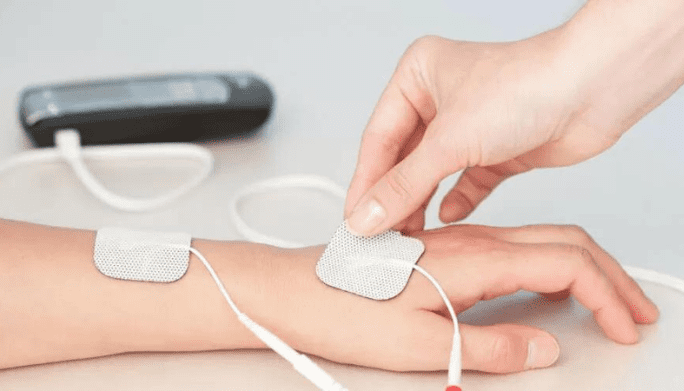Advantage Orthopedic Performance & Training
Iontophoresis in Lexington

Physical therapists use Iontophoresis to treat a variety of conditions such as tendonitis/ tendinopathy and scar tissue management. The skin is used to administer medication through electrical stimulation. Advantage Orthopedic Performance & Training can assist you in reducing inflammation, scar tissue and pinpointing pain areas to promote healing.
What is Iontophoresis?
Understanding the fundamental principles of iontophoresis is important. You should be aware that oppositely charged ions will attract one another.
If you take medicine that has a negative charge and apply an electrical charge to it, then the medicine will either be pushed away or repelled. Your physical therapist uses electricity to push medicine into the injured tissue using iontophoresis.
What Are the Common Uses of Iontophoresis in Lexington?
Iontophoresis can be used for many purposes. These include:
- Reduce inflammation
- Reduce pain
- Reduce muscle spasm
- Reduce swelling and edema
- Calcium deposits should be reduced
- Scar tissue can be managed
How Does Iontophoresis Work?
Your doctor or physical therapist will first determine which medication you should use before applying iontophoresis. The treatment goals will determine the medication that is used. To get a prescription from your doctor, fill it at the pharmacy and then take it to the physical therapist.
A patch with an integrated battery is used for iontophoresis. Two electrodes are included in the patch. One electrode is for the negative and one is for positive current. Your physical therapist will either apply medication to the positive or negative electrode, depending on what type of medication is being taken.
After the patch has been applied, the electricity is used to push the medication into the injured area. You can then relax.
How Does Iontophoresis Feel?
You might feel a slight sensation of tingling when the patch is applied. The typical treatment lasts for approximately 24 hours depending on how much medication your physical therapist administers to you. After your treatment is complete, you will be able to remove the patch. It is normal for your skin to become red after treatment.
After treatment, your physical therapist will provide you with specific instructions. It is common to withhold heat or ice treatments following iontophoresis, as these treatments can alter the circulation to the area. The medication may be “washed away” by the altered circulation. Ask your physical therapist if you have questions about the treatment.
Side Effects
Side effects of Iontophoresis are very rare. It is safe and painless. You may feel a pin-prick sensation while receiving stimulation. It is possible for the electrodes to cause redness. Patients may notice dryness or roughness in the areas where the iontophoresis was performed. You can reduce this by applying skin lotion to the affected area for several hours after the procedure.
Remember that iontophoresis can only be used as a passive treatment. The best physical therapy programs will require you to actively participate in your care. Your rehabilitation is often based on active exercises. Your physical therapist will help you develop a plan to manage your condition while you are away from the clinic.
Use Iontophoresis as Part of Your Recovery Plan in Lexington
Iontophoresis is a part of physical therapy. It allows you to inject medication into your body and help you get back to your normal activities quickly after an injury. Remember that iontophoresis can only be used as a passive treatment. The best physical therapy programs will require you to actively participate in your treatment. Your rehabilitation is often a combination of active exercises and other therapies like Iontophoresis.
Locate a Qualified Physical Therapist
Do you wonder if iontophoresis might be right for you? Advantage Orthopedic Performance & Training offers many options to help with pain and dysfunction. Remember that iontophoresis can only be used passively and should be combined with active treatment such as stretching and strengthening exercises, hands-on therapy, and manual therapy.

